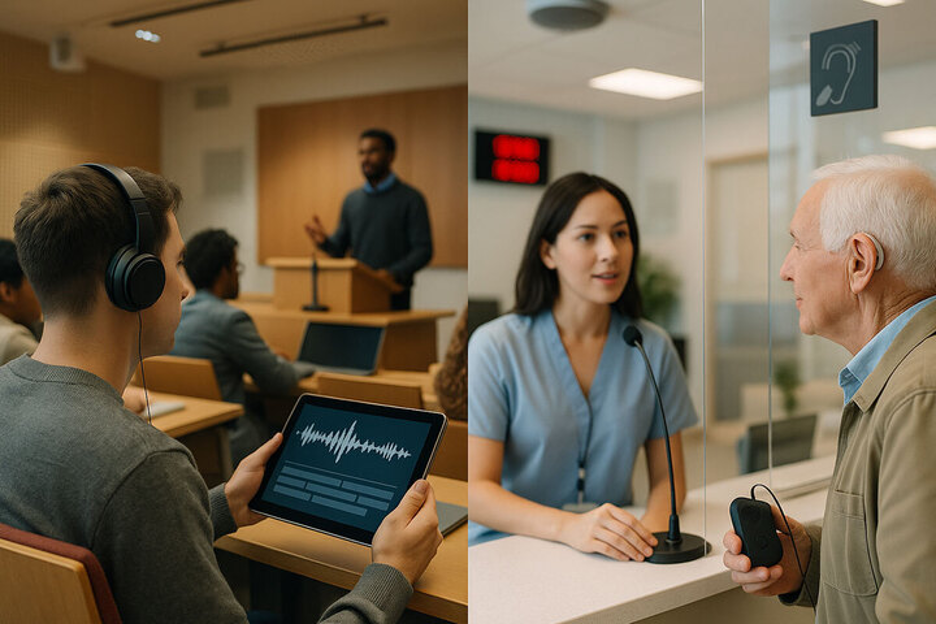
With a world that is becoming more and more digital and interconnected, access to information is the strongest empowerment tool. An integral component of this access is access to audio material, ranging from online courses and public service messages to emergency announcements. Yet a large portion of the population is often denied this important information by barriers in audio accessibility. This is not just a convenience or an option but an essential principle for constructing an inclusive and fair society, especially in the key areas of education and public services.
Here’s why audio accessibility is essential in education and public services.
It's an issue of equity and human rights
Essentially, the movement for audio accessibility is a social justice movement. Information, education, and civic participation should be universally accessible, not based on physical abilities.
If institutions do not provide easily accessible audio, they are creating systemic barriers that work against this principle.
Here’s how audio accessibility meets the standards of equity and human rights:
- Equal Access to Education: For hearing-impaired students or those with auditory processing deficits, a typical university lecture or Internet-based course is essentially a closed door. With no accessible audio, these students are precluded from accessing the material, contributing to discussions, or working with peers on an equal basis. By offering thorough transcripts and reliable captions, schools and universities can break down this barrier, enabling all students to seek their full educational potential.
- Civic Participation and Inclusion: Audio material is the main mode for conveying information in the public sector. Speech is the key medium for town halls, public meetings, legislative proceedings, and broadcasts of news. When audio accessibility is missing in all these areas, civic inclusion suffers because of it. Accessible audio makes it possible for all community members to be active and informed citizens.
- Legal and Ethical Compliance: Besides the ethical and moral considerations, there are serious legal requirements to keep in mind. Laws and regulations in most countries, for example, the Americans with Disabilities Act (ADA) in the US, require that public sectors and educational institutions offer equal access to information to individuals with disabilities. Non-compliance can result in legal penalties, fines, and damage to reputation. Compliance with guidelines such as the Web Content Accessibility Guidelines (WCAG) is not a checkbox; it’s a pledge to the respect of the law and to showing real respect for all citizens. Contemporary technological innovations, such as AI voice narration, are facilitating it to become less expensive and simpler for institutions to accomplish these commitments by automating the production of good-quality accessible audio content.
It serves a broader population
Although the main intention of audio accessibility is to cater to persons with disabilities, its advantages reach far wider than this population. This is the principle of universal design: designing products and services usable by the largest possible number of people.
- For Language Learners and Non-Native Speakers: For the learner of a second language, comprehension through listening is a big hurdle. Transcripts and captions serve as an important crutch, enabling them to keep pace with the dialogue, grasp context, and absorb new vocabulary.
- In Situational Challenges: Accessibility is not solely limited to permanent conditions; it also has to deal with temporary or situational limitations. Consider a student getting ready for a final exam on a noisy bus, or an individual attempting to view a public service video in a library. In both instances, the lack of the ability to hear the audio can prove to be a significant obstacle. Captions and transcripts facilitate this issue, allowing information to be accessible irrespective of the environment the user is in.
- For Different Learning and Consumption Habits: Individuals learn and process information differently. Some are visual learners who learn more efficiently when reading information. Others have cognitive or learning disabilities, which make it challenging to process auditory information. In offering a text-based alternative, we are catering to these different needs, and individuals can consume and absorb information the way they find most convenient.
It promotes independence and safety
In an age where autonomy is greatly desired, having the skills to gain access to information by oneself is vital. Audio accessibility, therefore, has a direct impact on enabling people and making them secure.
- Empowering Independence: Think public transport announcements, automated phone menus, or public building information kiosks. Where these services are based on auditory information alone, they leave people dependent on others for information. Providing text and visual information, we empower individuals to get around and use important services independently, to have more control over their lives.
- Public Safety Guarantee: During an emergency, a text-based alert system may be a question of life and death. Be it a natural calamity, a public health issue, or an attack on security, vital information must be disseminated to all citizens. The safest method to guarantee the same is through available audio/video, which can be broadcast through mobile applications, websites, or public screens.
Conclusion
Ultimately, the value of audio accessibility in public services and education goes beyond legal requirements or the convenience of technology. It is a devotion to a more functional, equitable, and inclusive society.



